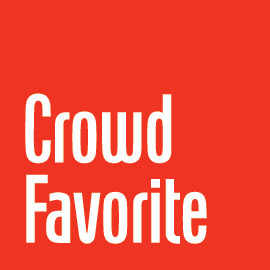Companies should stop thinking about having a “blog” and instead think more specifically about their audience and trying to communicate with potential users and clients.
Consider how blog information might reflect the design approach. Could the information be communicated outside of the traditional blog to better appeal to the audience? By thinking, “beyond the blog” when designing sites with dynamic content, it’s possible to build sites where users can find information easily and know what to expect as they browse.
Thinking of regularly-posted content as a “blog” oversimplifies things.
There are a variety of content types that can be found online. Some companies post articles to help establish trust as an industry leader, while others post articles to market products or grow better relationships with customers. Time-sensitive news material might be shared, along with galleries of photos from recent company events, or videos on a multitude of topics. There’s a variety of content available for consumption and grouping everything into one “blog” category doesn’t help users locate pertinent topics. Since the word “blog” alone fails to provide information on what to expect, it’s easy to fall into the trap of using the blog as a digital catch-all for a myriad of content types.
A blog is too often a dumping ground for anything a company thinks to post.
Other than a chronological format, the word “blog” doesn’t convey much meaning so it’s easy for it to become a place where any and every piece of content outside of the main navigation gets dumped. If that scenario sneaks up, then it’s time to reconsider your audiences and how you can better direct them. Instead of thinking of the content as being a “blog”, it’s helpful to work out ways to make the information clearer and more organized, by breaking it up into different areas of a site instead of lumping it all together.
By analyzing the audience, and what messages need to be communicated, it becomes easier to map out what type of information users may be in search of and understand their different interests, wants, and needs to drive them to those types of information.
Is your audience looking for resources or are they interested in opinions? Creating a new section of the site specific, announcements, or news is a more direct way to lead people to up-to-date posts. If the information only applies to a small percentage of the audience, such as employees or mothers, then maybe a separate website is the best approach. By taking a step back and considering the details, you can identify what format makes it easiest for your audience to find what they’re expecting.
Here are a few questions you can ask yourself when planning out content for your blog:
- What kinds of content will we be posting regularly?
- What topics will they cover?
- Do these content types have different audiences?
- Do these content types have different formats?
- Will one type of content overwhelm the others?
- How might we divide that content up more logically?
- Would it be appropriate to include certain content types with pages elsewhere on the site?
- What would be a more descriptive way to name those types of content?
By finding the answers to these questions, you can help determine where content belongs and how it should be treated to best suit your audience.
Ultimately, a blog is not always the most appropriate presentation of content.Your message will be loud and clear when you put it in a location the user anticipates. If you’ve thought, “beyond the blog” and carefully considered your audience, then congratulations to you. Users will be happy to find what they are looking for!






